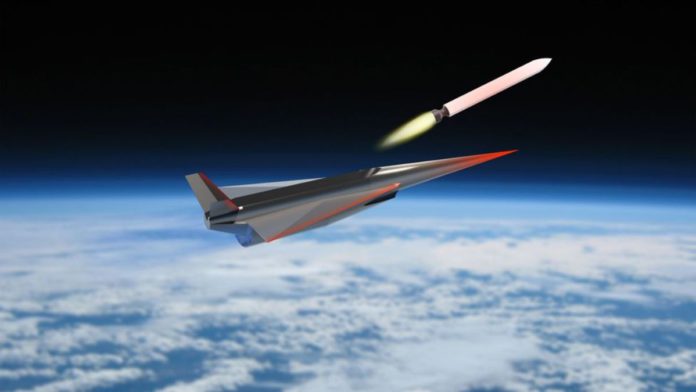According to sources, NASA is developing a new hypersonic missile that will allow missiles to be optimized for maximum range and damage. It is leveraging an AI-based technology to work around a scramjet missile design by using the results of computational fluid dynamics (CFD). Compared to typical, bulky rockets, the Scramjet, or ‘supersonic combustion ramjet,’ makes optimal fuel use, reaches hypersonic speeds, and produces maximum damage on impact. The scramjet achieves far quicker speeds because of very effective propulsion mechanisms, and it can be built in a much smaller, lighter form, and has a greater range than traditional rockets. This is where Artificial Intelligence enters the hypersonic missile development process.
Any aircraft or drone that can achieve Mach 5 or more, or five times the speed of sound at sea level, is considered hypersonic. To give an insight, passenger planes fly at around 600 mph (966 kph), whereas hypersonic systems move at speeds of up to 3,500 mph (5,633 kph) – roughly 1 mile (1.6 kilometers) every second.
Achieving such velocity allows hypersonic aircraft to bypass existing air defenses and anti-ballistic missile systems. It also improves their ability to penetrate strongly protected facilities and kill targets with only kinetic energy, without the need for a payload of high explosives. The ability to move and maneuver at hypersonic speeds, on the other hand, poses considerable and diverse engineering hurdles.
Because of their high-velocity mobility throughout their trajectory, these new missiles must be followed throughout their journey since their flight trajectories might alter as they travel.
On the fluid forces factor, when a missile or aircraft breaks beyond the sound barrier, a shock wave is created that is hotter, denser, and has greater pressure than the surrounding air. Friction and air resistance produce a huge amount of heat in the hypersonic phase, which might cause structural damage to commercial aircraft.
By studying the behavior of fluids like air and water, researchers have long used CFD to anticipate, among other things, how an aircraft in flight would interact with the forces surrounding it. In CFD the behavior of fluids such as air and water are expressed numerically and visually to better understand the fluid dynamics. On top of that, aerospace engineers must consider how air flows around the plane or weaponry payload and how it behaves as it passes through the engines and reacts with fuel.
Typically, hypersonic missiles require enormous power and fuel to operate effectively at high speeds, which was previously only conceivable with rockets. This motivated NASA to turn to ‘scramjets’ as an alternative.
Traditional air-breathing jet engines, such as those seen in big passenger planes, actively take in and compress oxygen in order to burn fuel while flying especially using rotor blades. However, after the jet or weapon reaches Mach 3, this is no longer necessary because the passage of the jet or weapon through the air does this on its own. This is where scramjet outshines commercial aircraft.
To help NASA in its mission USA’s Argonne National Laboratory will contribute its supercomputing capability to accelerate the development of hypersonic testing equipment, including experimental aircraft like the X-43A scramjet-powered plane created as part of its Hyper-X program. The company will enlist CFD to model and predict how an aircraft will react to the forces around it at hypersonic speeds. Earlier this year, the lab delivered a presentation at an American Institute of Aeronautics and Astronautics (AIAA) Forum, explaining how it is utilizing AI to better computer simulations and simplify the creation of cutting-edge aircraft.
With the help of Argonne, NASA has created a hypersonic computational fluid dynamics code called VULCAN-CFD, which models how combustion occurs in turbulent airflows of engines at sub-, super-, and hypersonic speeds with the aid of Argonne.
The software works by storing single, one-dimensional snapshots of flames called “flamelets” in enormous, multidimensional flamelet tables. Later, the flamelet table, which was created using Argonne software, was used to train an artificial neural network. This was critical because it minimizes the high memory needs and computing costs involved with simulating hypersonic fuel combustion.
Read More: NASA’s Perseverance Mars rover traverses Martian delta using AI
Thanks to the Argonne simulations, NASA aerodynamicists were able to better grasp how high temperatures, high pressures, and turbulent air flows influence aircraft at hypersonic speeds. That is, without putting experimental aircraft in dangerous real-world test scenarios at high altitudes, which can range from 100,000 to 300,000 feet at the very edge of outer space.
Meanwhile, Argonne believes that owing to the positive results of VULCAN-CDF, NASA now has a good handle on the effects of Mach 5 and higher on aircraft, allowing it to pursue the development of experimental and commercial hypersonic aircraft.


